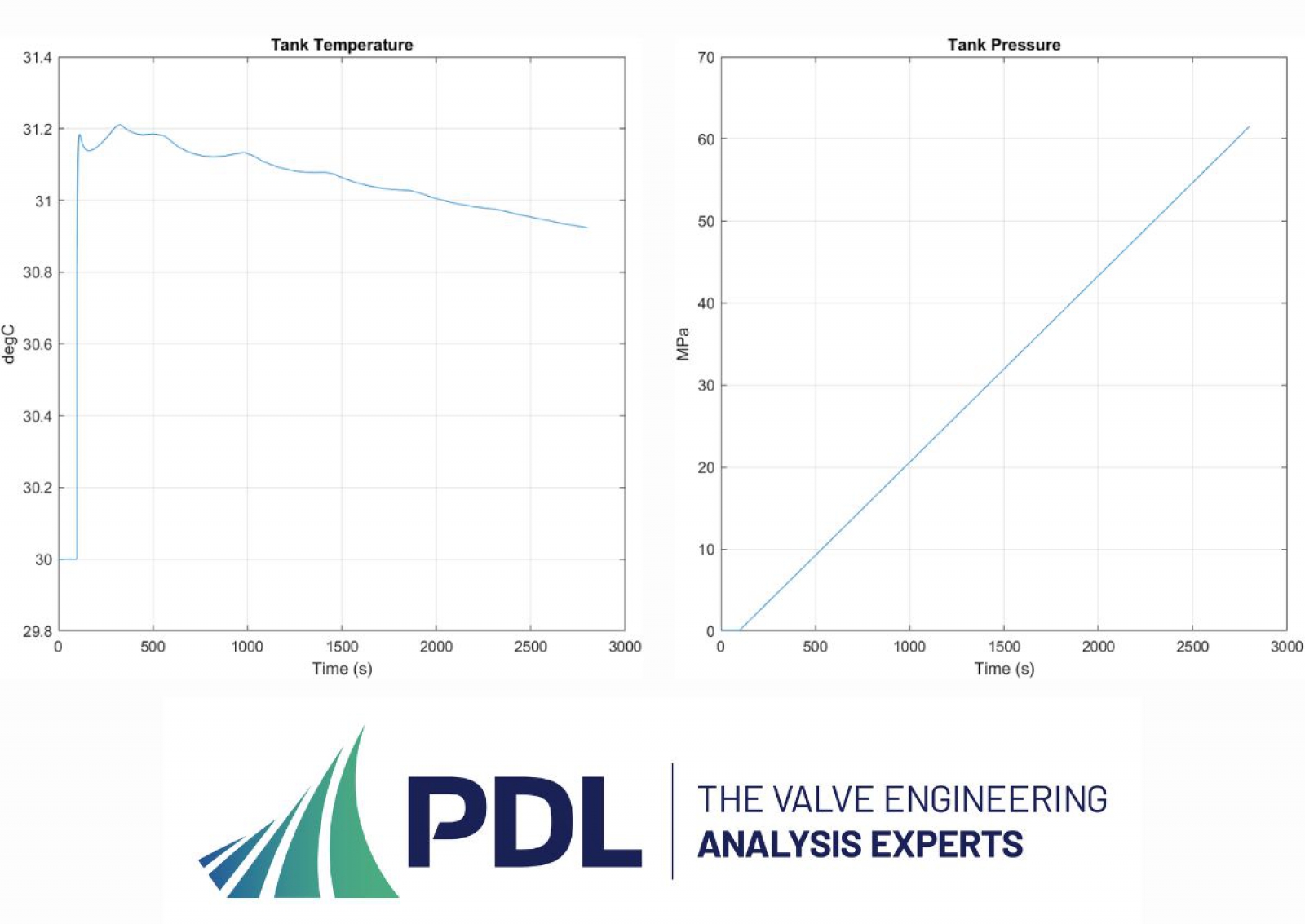PDL Experts Provide Simscape Modelling to Optimise Filling of Hydrogen Tank

Tank temperature and tank pressure over time.
PDL Engineering Group are experts in applying advanced engineering software to address the needs of valve and actuator clients across the hydrogen sector to understand the behaviour and challenges of hydrogen in production, storage (gas, liquid and solid-state), transportation, and utilisation.
The analyst team simulate and model different conditions to provide clear visualised results which explore a range of design parameters, using structural calculations, Computational Fluid Dynamics (CFD), Finite Element Analysis (FEA) and Multidomain Physical System Modelling (Simscape). Through these methods, Thermal Assessments, Pipe Stress Analysis, Fracture Mechanics, Hydrogen Induced Stress Cracking (HISC) Assessments, and Fatigue Life Assessments are conducted.
Recently the team supported a leading provider of high-pressure gas compression and transfer equipment to develop the infrastructure of hydrogen refuelling projects around the world.
PDL analysts created a series of simulations using 1D CFD analytical modelling software Simscape. These simulations aimed to determine the fill time, fill pressure and maximum temperature for various hydrogen tank sizes during the dispensing process, including those used in a heavy goods vehicle (HGV) and boat vessel. The goal was to understand the impact of flow rate on filling time, and provide recommendations to optimise the filling process.
In this study, the primary objective was to determine whether these tanks could achieve a 100% State of Charge (SOC), corresponding to a tank density based on the tank service pressure of hydrogen at 15°C.
Heat transfer coefficients (HTC) were used to quantify heat transfer mechanisms including convection, conduction and radiation, serving as thermal coefficients to account for heat transfer inside, through, and outside of the tank. The Average Pressure Ramp Rate (APRR) was varied as an input parameter, taking into account a range of possible inlet mass flow rates. This approach allowed for a comprehensive exploration of the system's behaviour under different conditions.
The analysis revealed fill times ranging from 20 to 40 minutes, providing fill options that ensured that the tank fill pressure did not exceed 38 MPa, and the tank temperature remained below 85°C. Exceeding these limits could pose safety risks when dealing with compressed hydrogen.
The team provided a detailed table featuring various options for different tank sizes, showcasing both fill times and fill pressures alongside the necessary criteria. This allowed the client to clearly identify the optimal process. The Simscape model and simulations provided solutions more swiftly, more efficiently and more safely than relying on physical testing.
Telephone: + 44 (0) 1 434 609 473
Email: solutions@pdl-group.com
Website: www.pdl-group.com

| Telephone: | 00 44 1434 609473 |
| Email: | solutions@pdl-group.com |
| Website: | www.pdl-group.com |
| More information on the PDL Solutions (Europe) Ltd BVAA Member Directory Page |
Search related valve / actuator articles: PDL Solutions (Europe) LtdIssue 88CFD & FEA








-web.jpg)





